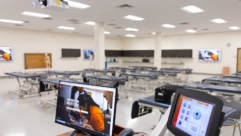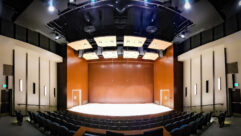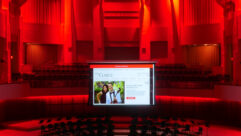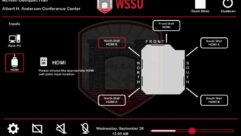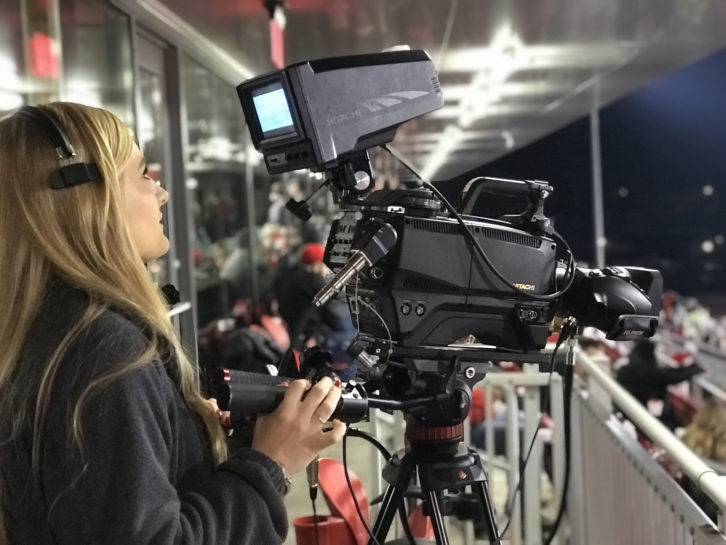
The Department of Communication at Austin Peay State University (APSU) offers students real-world, hands-on experience in a full array of television and sports broadcasting disciplines.
Located just 45 minutes from Nashville in downtown Clarksville, Tennessee, APSU is a four-year public university with more than 10,000 undergraduate and graduate students. APSU Television (APSU-TV) operates 24 hours per day and features student-produced news, public affairs, sports and special event programming. The APSU Department of Communication also offers the only Sports Broadcasting major in the state of Tennessee, providing students with live production experience on APSU football and basketball broadcasts, as well as video scoreboard productions.
While APSU-produced programming can be seen on outlets ranging from the campus cable channel to the EPSN+ streaming service, the department’s primary focus is on the educational experience. “Even though our department does productions, they are all embedded within our curriculum,” said Kathy Lee Heuston, professor and interim chair, Department of Communication at APSU. “Even our sports broadcasts are part of the curriculum. We properly train the students, and then they apply those skills on actual productions.”
That emphasis on experiential learning was core to the university’s earlier purchase of six Hitachi Kokusai Z-HD5000s for its basketball and football venues, the Dunn Center and Fortera Stadium. “Our objective was to have a professional camera to teach the students on, so they would be prepared when they went out into the real world,” said Lee Heuston. “The Z-HD5000 met all of the requirements while best fitting the budget, making it the first time the department was able to purchase professional-level cameras.”
“It turned out to be a huge benefit when we started with ESPN+ that we already had cameras that met ESPN standards,” added Steve Sawyer, video production coordinator at APSU.
When it came time to upgrade the department’s educational television studio, the Hitachi cameras were again a natural fit. “Our previous studio cameras were not professional-grade and were due for replacement, so we needed to upgrade to make everything function the way we wanted,” explained Lee Heuston. “Adding more Z-HD5000s gave us consistency, so once the students learn how to use them in the studio, they’re immediately able to use them in our other venues.
“The Hitachi cameras are very easy to teach,” he said. “Everything is very well-placed in the layout of the controls.”
While the three new Z-HD5000s are deployed in fixed positions in the studio, the arena cameras are deployed in various combinations of tripod-based, ladder-mount and handheld operation depending on the sport. “The Z-HD5000s are very rugged,” Sawyer said. “We’re constantly setting up and tearing down the cameras, and moving them across campus. We’ve had absolutely no problems – they’re like tanks.
“We use other cameras in certain situations, such as robotic basketball backboard cameras, and there’s just no comparison in quality,” said Sawyer. “When we do need to take those other shots, we use them very sparingly, because you can definitely see the difference.”
Similar quality is evident in the studio. “With the Z-HD5000s feeding our NewTek TriCasters, we get very clear pictures and the results really look professional,” Sawyer says.



